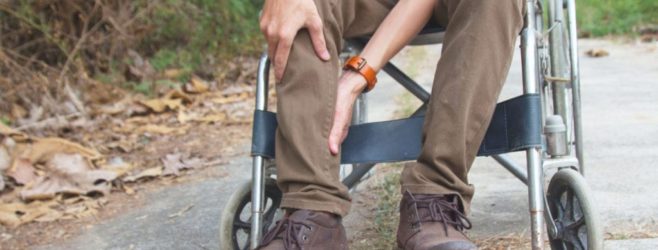A new study finds people with cerebral palsy are more likely to develop osteoporosis or osteoarthritis than those without it.
Though these findings reveal yet more potential health challenges for those living with cerebral palsy, this research allows doctors and therapists to tailor treatment plans and therapies to suit the needs of their patients.
Cerebral palsy is not a progressive disease — it doesn’t get worse over time. However, around one-third of people with cerebral palsy will experience muscle or bone pain alongside reduced physical ability as they age.
The results of this study help doctors better understand that this type of pain isn’t a normal part of cerebral palsy and aging. Instead, the results show that the patients may also have osteoporosis or osteoarthritis.
Findings Show Increased Risk of Osteoporosis and Osteoarthritis
The newest study, published in the August 2019 edition of the orthopedic surgery journal, Bone, looked at whether people with cerebral palsy had a higher risk of developing osteoporosis, osteoarthritis, or other inflammatory musculoskeletal disorders.
The researchers took past data recorded between 1987 and 2015 and compared adults with cerebral palsy against adults without.
Between these two groups, they compared rates of osteoporosis, osteoarthritis, and inflammatory musculoskeletal diseases. They accounted for lifestyle factors that contribute to an increased risk of these diseases, such as smoking, alcohol consumption, and amount of doctor visits, to not skew the data.
The findings showed an apparent increased connection between cerebral palsy and both osteoporosis and osteoarthritis. Researchers feel these results demonstrate a need to consider both diseases as comorbidities (co-occurring diseases) of cerebral palsy and to tailor treatment accordingly.
What Are Osteoporosis and Osteoarthritis?
Osteoporosis and osteoarthritis are musculoskeletal disorders that affect the bones and joints, respectively. They can significantly reduce a person’s mobility and quality of life, causing them chronic pain.
Osteoporosis
Osteoporosis is when the tiny holes within a person’s bones expand, making the bone more brittle. This makes it more likely that the person will break their bones even when performing seemingly harmless activities like standing up or walking.
The most common bones affected by osteoporosis are:
- Ribs
- Hips
- Vertebrae
- Wrist bones
Unfortunately, most individuals won’t learn they have osteoporosis until they have broken one of those bones. There is no cure for osteoporosis. It’s manageable with medications, vitamins, a healthy diet, and strength-training exercises, like stair climbing, push-ups or squats.
Osteoarthritis
Osteoarthritis is caused by injuries to the joints, for example, torn cartilage or ligaments, and dislocations. These injuries damage the cartilage, which is the protective tissue that covers the ends of the bones.
When the cartilage breaks down, the bones rub against each other, causing pain, stiffness, inflammation, and tenderness.
With osteoarthritis, the most commonly affected areas are:
- Hands
- Knees
- Hips
- Spine
Osteoarthritis isn’t reversible, but the symptoms can be managed with low-impact exercises — such as swimming, yoga or tai chi — healthy sleeping habits, hot or cold compresses, pain medications and anti-inflammatories, massages, and healthy eating habits. The best foods for osteoarthritis are high in omega-3 fatty acids, beta-carotene, and vitamins C and D.
Managing Comorbidities of Cerebral Palsy
Generally, people with cerebral palsy are more likely to have comorbidities —such as osteoporosis and osteoarthritis — on top of cerebral palsy. Other examples of comorbidities in people with cerebral palsy include epilepsy, ADHD, and depression.
With this latest research, the medical community can be more aware of additional risks that people with cerebral palsy experience.
While osteoporosis and osteoarthritis are both manageable, they can be progressive if left untreated. Now doctors can intervene earlier to prevent and manage these conditions more holistically and with better understanding.
Knowing that there is an increased risk of these diseases also allows parents to watch out for signs and symptoms so that children with cerebral palsy can get treatment right away.
If your child has cerebral palsy due to a birth injury caused by medical negligence, the Birth Injury Justice Center can work with you to investigate your case and potentially help seek legal compensation. Compensation can help parents afford various therapies and treatments that children with cerebral palsy often need.
To learn more, contact us today.



